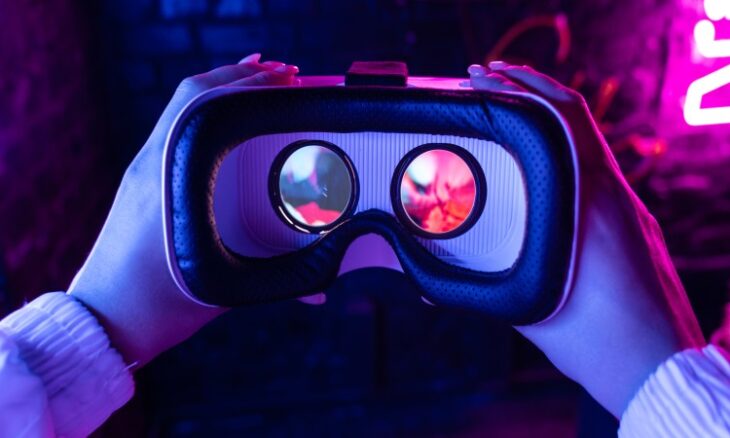ByteDance plots Pico goggles to rival Meta Quest
ByteDance, the Beijing-based parent company of TikTok, has set out a two-year timetable for its expansion into virtual and augmented-reality hardware. Internal planning documents viewed by industry observers indicate that the firm’s Pico division is working towards releasing a new pair of mixed-reality goggles in 2027. The schedule signals renewed commitment to the headset market after a period of muted sales for Pico’s earlier devices and the cancellation of the proposed Pico 5 model.
The wearable-technology landscape is currently divided between high-performance head-mounted displays, typified by Meta’s Quest portfolio, and lighter spectacles such as the Ray-Ban-branded smart glasses developed in partnership with Meta. The former emphasise computing power and immersion but are bulky, while the latter prioritise aesthetics at the cost of processing capability. ByteDance appears to be attempting to occupy a middle position by coupling a compact goggle-style visor with an external processing unit small enough to sit unobtrusively in a pocket.
Early design sketches show a curved visor intended to distribute weight evenly across the face, reducing user fatigue during extended sessions. To keep the frame slim, most of the computing load will be handled by the separate “puck”, linked wirelessly to the goggles. Industry analysts suggest that this arrangement could allow the headset to remain light while still delivering experiences closer to those on full-scale standalone units.
ByteDance engineers are reported to be developing bespoke semiconductors for the forthcoming product. These chips are intended to minimise motion-to-photon latency and improve thermal efficiency, both areas in which first-generation Pico headsets struggled to match market leaders. Lower lag is viewed as essential in preventing motion sickness and maintaining immersion in augmented-reality overlays. If successful, the silicon could give Pico a performance differentiator in a sector where margins of comfort and responsiveness heavily influence consumer perception.
Although the project sits within Pico and is formally separate from TikTok, commercial synergies are anticipated. Meta has demonstrated that virtual-reality hardware can feed an ecosystem of creator-driven content, with platforms such as Roblox gaining traction inside Quest headsets. ByteDance already operates a vast content network through TikTok’s recommendation algorithms, and it is understood that the company is exploring methods of extending short-form video engagement into spatial environments. The possibility of integrating interactive experiences or live-streamed events directly into wearable displays could broaden revenue streams and keep users within ByteDance’s services for longer periods.
Market conditions nonetheless remain challenging. Sales of dedicated VR devices softened globally during 2024 as consumer interest shifted towards lighter augmented-reality form factors and multi-purpose mobile devices. Pico’s existing catalogue, while technically competent, failed to gain a significant market share outside China. In response, ByteDance cut marketing expenditure and paused the Pico 5 project, choosing instead to redirect resources towards a redesigned product that targets mainstream audiences rather than early adopters. The forthcoming goggles, therefore, represent both a technological upgrade and a strategic reset.
Competitors are not standing still. Meta continues to iterate on its Quest line, while Apple’s Vision Pro emphasises high-end mixed-reality, and smaller entrants pursue niche applications in industrial training and healthcare. By opting for a hybrid approach that offers more features than basic smart glasses yet remains lighter than head-mounted displays, ByteDance hopes to differentiate on comfort and style. The design team is reportedly working with materials suppliers to reduce frame thickness, and prototypes are said to weigh noticeably less than current Quest headsets.
Pricing strategy has yet to be disclosed. Analysts predict that the cost will need to sit below flagship standalone units to encourage adoption, especially in emerging markets where TikTok commands large user bases but discretionary spending on premium electronics remains sensitive. ByteDance’s large-scale manufacturing partnerships could deliver cost efficiencies, although the inclusion of a separate processing puck may complicate the final bill of materials.
If the 2027 launch proceeds on schedule, the product will arrive roughly five years after the release of the Pico 4 and almost a decade after ByteDance’s acquisition of Pico Interactive. Success will depend on convincing consumers that the goggles provide meaningful improvements in comfort, latency, and content breadth while avoiding the social stigma often associated with wearing conspicuous headsets in public. Should ByteDance manage that balance, the new device could provide the company with a foothold in spatial computing and a fresh avenue for monetising its vast entertainment ecosystem.










